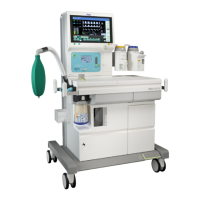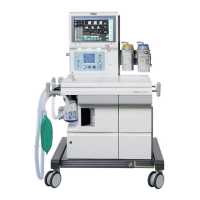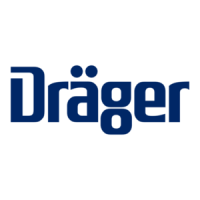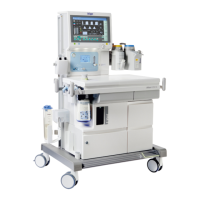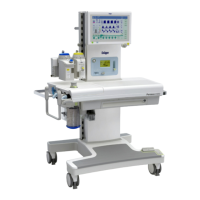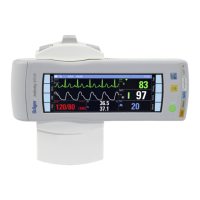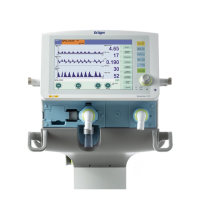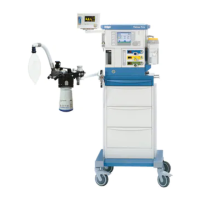Supplement Paper Apollo SW 3.2n, SW 4.n 7
Standard operation is possible with the CO
2 mod-
ule even if the inspiratory carbon dioxide values
reach 3.5 Vol.%. If, however, the CO
2 concentra-
tion exceeds this level, breathing phase-derived
gas measurement values may not be available. For
this reason, inspiratory and expiratory gas mea-
surement values and the respective alarm trigger-
ing (based on a breathing phase) can no longer be
ascertained. In such cases, real-time values are
displayed at a rate of 1/s. To monitor the CO
2 con-
centration, the user must correlate the displayed
real-time values to the CO
2 waveform display.
To ensure adequate gas monitoring, the bypass
mode is mandatory when the Apollo is intended for
operation with inspiratory CO
2 levels above
3.5 Vol.%. When running in bypass mode, absolute
inspiratory and expiratory CO
2 measurements, as
well as apnea detection for CO
2 and pressure, are
deactivated. The only apnea alarm function remain-
ing is then based upon flow measurement; this is,
however, deactivated in the Man/Spont mode. To
provide adequate monitoring during Man/Spont,
the lower minute volume limit must be appropriately
set.
The upper inspiratory CO
2 alarm limit is adjustable
and can be disabled, to prevent nuisance alarms.
The CO
2 module is equipped with an SORC. This
safety feature limits the CO2 concentration in the
fresh gas so that the O
2 concentration does not fall
below 21 Vol.%. When the CO
2 flow control is open
and the O2 flow control is closed (or the O2 flow is
less than 500 mL/min), the SORC prevents a CO
2
flow. If the CO
2 flow fails, oxygen can still be admin-
istered.
WARNING
Risk of patient injury.
To ensure proper CO
2 monitoring and prevent
a risk to the patient, only set the CO2 alarm
default value to a higher limit if the device is
being used solely for CO
2 applications.
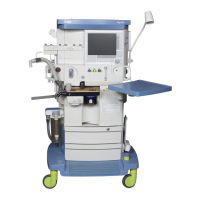
